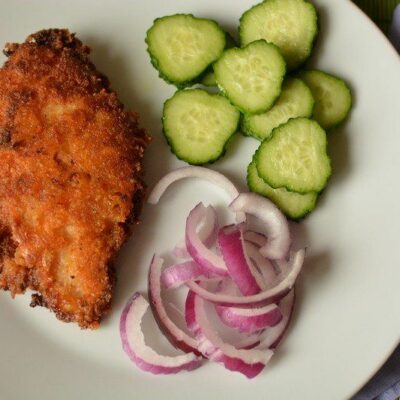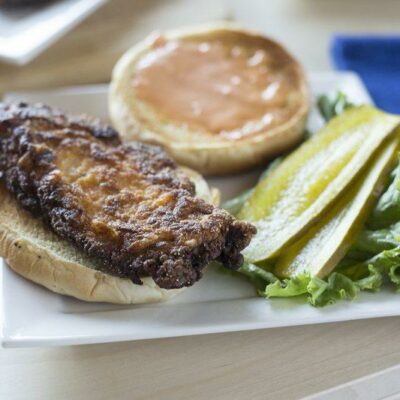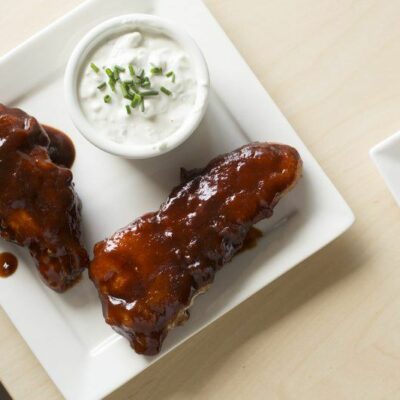
Few foods are as universally popular as the humble fry. Since their inception they have circled the globe, featuring many in different cuisines and traditions along the way. They’re the perfect combination of crispy, crunchy, and salty, creating a snack that’s almost impossible to pass up. Indeed, the biggest challenge is stopping once you start.
It’s easy to think of fries as being incredibly simple. After all, they’re just fried potatoes, right? Yet, there’s something in the way that these treats are prepared that transforms the humble potato into something much more revolutionary.
The power of preparation is also why there are so many different types of fries, including shoestring fries, steak fries, curly fries, waffle fries, and regular ol’ standard cut fries. That’s not even counting all the differences in the ways you can cook or season fries.
So, today we’re digging into the many variations of fries and what makes each one distinct. What’s your favorite? Do you enjoy the thin crispiness of shoestring fries, the fluffy interior of steak fries, or something different again?
P.S. As you’ll see, a few of these items are debatable. For example, are tater tots a type of fry or not? What about loaded fries or chili cheese fries? A similar issue happens with sandwiches, where there’s endless debate about whether wraps or burgers can be classified in the broader sandwich category. Still, exact definitions don’t matter too much. Either way, we’re talking about tasty and crisp fried perfection.
Types Of Fries
Shoestring Fries

Shoestring fries are long, thin, and very crisp. They’re cut somewhere between 1/4 inch and 1/8 inch wide, which creates a high ratio of crisp outside to fluffy inside.
While the crunchiness can be appealing, these fries often aren’t as satisfying as some of the thicker cuts. They can easily be oily as well, which makes them less appealing.
Still… there’s much to be said for the crispiness of shoestring fries, especially when they’re served with the right amount of salt. The crispiness keeps them popular on fast food menus throughout the world and often means you can’t stop after eating just a few fries.
Interestingly, some countries use the terms French fries or skinny fries to refer to thin fries (including shoestring fries), while thicker cut fries are often called chips instead.
Matchstick Fries

Matchstick fries are almost exactly the same as shoestring fries. The one difference is length, as matchstick fries live up to their name and are around the length of a matchstick. The smaller size can make matchstick fries even crisper than shoestring fries.
That said, there are no requirements for length or thickness of these fries, so you’ll see different versions from one company to the next.
Standard Cut Fries

Standard cut fries are the traditional version. They’re thicker than shoestring fries and thinner than steak fries, giving you an almost perfect balance of exterior to interior.
Such fries are also easy to make at home. You can even get the right thickness without any special equipment.
Equally important is the versatility of these fries. Their size makes them excellent for dunking and they’re often used as the base for loaded fries and similar dishes.
Natural Cut Fries

The term natural cut fries simply refers to fries where the skin has been left on, rather than removed. Doing so gives the fries a rustic appearance, while also adding a slight earthy flavor to them.
The flavor difference alone makes these fries an exciting alternative to regular ones. They can also be found in many styles. Some may be thin like shoestring fries, while others are similar to standard cut chips or even thicker.
There’s another benefit too. Leaving the skin on makes these fries much easier to prepare than normal. That’s perfect if you’re cooking a large batch for a party.
Bistro fries are a variation on this theme. In addition to having the skin intact, these fries are also soaked in water for a few hours before being fried. Doing so removes some of the extra starch and helps the fries to crisp up perfectly.
Steak Fries

Steak fries are an interesting addition. While they’re typically still classified as French fries, they’re much thicker, often around a 1/4 inch in width.
The thickness changes the ratio of the fries, giving you plenty of pillowy interior, with less contrasting exterior. This shift in ratio is fantastic when you’re serving the fries alongside meat (particularly steak) and you can easily dip them in sauce or leftover gravy.
The fries do have issues too, as the amount of fluffy interior often seems like a bit much and the fries can easily get soggy. As such, they’re best served alongside meat, rather than being a snack on their own.
British Chips

By British chips, we’re talking about thick-cut fries, the type often sold in fish and chip stores throughout the UK. The chips are fairly thick, sometimes a similar thickness to steak fries or perhaps a little smaller.
Because of their size, British chips have a decent soft pillowy interior and a crisp exterior (although not as crisp as shoestring fries). The chips are often served alongside battered fish, burgers, sausages, and similar dishes.
These chips have a long history and cultural significance all of their own. They’re traditionally salted and served with malt vinegar, although other popular condiments may be used instead, like tomato sauce.
Belgian Fries

Belgian fries also go by the name frites and are a popular national dish in Belgium. They’re thicker than regular fries and are traditionally double cooked, which helps to give them a soft interior and a crispy outside.
These fries are frequently sold in paper cones and topped with sauce, although they’re not that common in the United States. If you can find them, the fries are well worth trying – they’re so much better than most local versions.
Wedges

Wedges live up to their name, as they’re cut into a wedge shape with a thick base and thin top. They’re typically quite thick, although you might find multiple wedge sizes within a single batch, giving you different levels of crispness.
Wedges are also extremely easy to prepare, especially as the skin is often kept on. Alternatively, you can simply buy frozen wedges at the store and heat them up at home.
The large size of wedges makes them fantastic with dipping sauces. You can also make loaded wedges dishes, often with plenty of bacon and cheese on top.
Curly Fries

Curly fries are one of the most popular types of fries, for good reason. The curly shape of the fries and their texture make them taste amazing, especially when they are well-seasoned with ingredients like garlic powder and paprika.
In fact, many curly fries use such a bold seasoning mix that you don’t need any dipping sauce at all.
There’s just one catch – curly fries are tricky to make at home. You often need a specialized spiralizer to make the fries and even then they mightn’t be as good as the store-bought version.
Potato Tornado

Potato tornados are mostly a type of fair food and aren’t often sold in restaurants. They’re made by cutting a whole potato to create a spiral shape, which can then be skewered and deep fried.
The approach creates thin and crisp twists of potato that are amazing when seasoned well. There are now plenty of recipes for making these at home as well, which often involves baking the potato spirals instead of deep frying them.
You can even make loaded versions of these potatoes by adding toppings like cheese, bacon, and sour cream.
Cottage Fries

Cottage fries are a different approach to fries. Here, the potatoes are cut horizontally to create rounds that can be easily seasoned and baked in the oven.
This style means that cottage fries often look a little like potato chips. However, they’re normally thicker and have a pillowy interior that you never get with potato chips.
Some versions of these fries are made with a special tool, giving them ridges on the surface. Homemade versions tend to be simpler, without ridges, although they taste just as delicious. They’re also one of the easiest types of French fry to make at home.
Crinkle Cut Fries

Crinkle cut fries are basically just regular fries that have been cut in a crinkly shape rather than straight. The approach creates an interesting texture, but it’s often hard to cook them well without parts ending up soggy.
You also need a special tool if you hope to make crinkle cut fries at home. So, if you want to try them, it’s best to look for a fast food location that serves the fries, like Arby’s and Shake Shack.
Waffle Fries

It’s easy to see where waffle fries get their name from, as they really do look like little waffles. They’re made using a special tool that creates a grid-like pattern and keeps the fries nice and crisp. You can also use a mandoline with a waffle cutter attachment or a hand-held crinkle cutter, if you don’t mind a little extra work.
Like curly fries, waffle fries offer a distinct crispy texture that’s easy to love. They’re especially good with a delicious dip or two.
Tater Tots

There’s some debate about whether tater tots count as a type of fry or not, given that they’re made with grated potatoes instead of whole potatoes. Still, tater tots have most of the same properties as fries, so they’re good enough to feature on this list.
More importantly, tater tots taste amazing. They’re the perfect balance of crisp exterior and soft interior, plus a slightly different flavor than fries. Tater tots are also versatile. You can even use them to make a casserole, breakfast bake, or a unique version of shepherd’s pie.
Hash Browns

If we’re including tater tots on this list, then hash browns are essential too. They’re often made using shredded or diced potatoes, then pan fried – giving them a fantastic texture and flavor.
The style of hash browns varies, with some being in the form of a patty, while the potato pieces are more separate for others. While hash browns are most often served for breakfast, they can be used at other times of the day as well.
Fries Without Potatoes
Now, let’s talk a little about alternative fries. These follow the same idea as regular fries and can be just as satisfying. But, they use a different base vegetable, which has impacts on the flavor and texture.
Sweet Potato Fries

Sweet potato fries are a popular alternative to regular fries, as they tend to be sweeter, less starchy, and offer their own distinct flavor. This version of fries could even be a little healthier, as they have a lower glycemic index than potato fries and are rich in antioxidants.
Baking the fries makes them healthier too, although the baked versions do end up softer than regular fries. However, differences between potatoes and sweet potatoes mean these fries are rarely as crisp as regular fries.
Zucchini Fries

Zucchini fries are normally made by cutting strips of zucchini, coating these in batter, then either baking or frying them. The baked version ends up relatively soft, while the fried ones have a similar texture to regular fries. They can also be air fried, which gives the fries a good texture while also keeping them healthy.
Zucchinis are naturally low in carbs, making them a great choice for health. To keep the fries low carb you’ll also need to use low carb options for coating, like parmesan cheese or coconut flour.
Green Bean Fries

These are one of the simplest alternatives to fries that you’ll ever find, as they’re made from green beans that have been coated and then baked in the oven (an air fryer works too).
The beans don’t really taste much like fries, but they have a similar crunch and should satisfy some of the same cravings. They’re also much healthier and contain plenty of nutrients.
Famous Dishes With Fries
When talking about fries, sometimes it isn’t the cut of fries that matters most, but how the fries are served instead. This could be as simple as serving fries with plenty of salt and perhaps dipping sauce. Or, you might try one of these famous dishes.
Garlic Fries

Garlic fries are one of the simplest ways to tweak the flavor of your fries. One approach is to mince garlic and toss it through with fries and oil. Alternatively, you can make garlic infused oil and use this oil to fry the potatoes. Or, to keep things simpler, the fries might just be served with garlic salt.
The use of garlic works well, as you’re getting a little extra flavor, but not too much. The flavor of garlic also complements many meals, so it doesn’t matter what you’re serving alongside your fries.
Loaded Fries

Now let’s switch styles a little and talk about loaded fries. This term refers to dishes that have fries at their base and then have a variety of toppings, such as meat, melted cheese, sauce, and sour cream.
There are endless variations for this meal, allowing you to experiment to your heart’s content. You can even make vegetarian versions by swapping out a few ingredients.
Regular fries are a great choice for this dish. You could also experiment with thicker fries, like steak fries or even wedges. Thinner options (like shoestring fries) don’t work as well, as they’re too crispy and aren’t strong enough to support the toppings
Chili Cheese Fries

Chili cheese fries start with a base of regular fries, which are then topped with plenty of chili and cheese. Other ingredients might be included too, like tomatoes, diced onions, and spices for flavor.
The addition of chili and cheese turns your fries into a much more filling and comprehensive meal. This is much better than simply eating fries on their own.
The only catch is that the chili can quickly make your fries soggy. Whether this matters depends entirely on how you feel about soggy fries. Some people don’t really mind, while others can’t stand the idea.
Poutine

Poutine is a popular Canadian dish that sounds strange, yet is incredibly delicious and the ultimate version of comfort food. It starts with fries again, which are then covered with plenty of flavorful brown gravy and fresh cheese curds.
The cheese slightly melts under the heat of the cheese and gravy, making the whole thing taste much better.
While this is a traditional Canadian dish, it certainly isn’t limited to Canada. You can now find it served in bars and pubs in many parts of the world, including the United States.

















 What To Serve With Beet Salad
What To Serve With Beet Salad